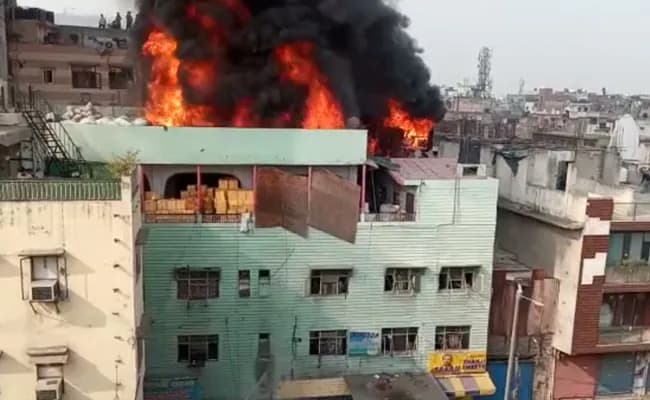The Delhi High Court, in a significant judgment delivered on August 4, 2025, dismissed the petition filed by Mohd. Imran seeking discharge in the 2019 Anaj Mandi fire case. The tragic incident, which claimed 45 lives and left 21 injured, was one of the deadliest fire accidents in Delhi’s history. The court upheld the charges framed against Imran under Sections 304 (Part II), 308, and alternatively under Sections 304A, 337, and 338 of the Indian Penal Code (IPC), read with Sections 35 and 36 IPC.
Background of the Case
The fire broke out in the early hours of December 8, 2019, in a densely populated building in Anaj Mandi, Sadar Bazar. The building, jointly owned by Mohd. Imran and two others, was being used for illegal commercial activities, including manufacturing units employing laborers, many of whom were minors. The investigation revealed severe violations of building safety norms, including blocked staircases, exposed electrical wiring, and storage of flammable materials.
The Forensic Science Laboratory (FSL) report concluded that the fire was likely caused by an electric short circuit. The building’s height exceeded the permissible limit under the Delhi Master Plan-2021, and its upper floors were being used for commercial purposes without authorization.
Read also:- Article 370 Fallout: SC to Hear Plea on Restoring J&K Statehood
Petitioner’s Arguments
Mohd. Imran sought discharge, claiming he did not own or control the floor where the fire originated. He relied on rent agreements and a General Power of Attorney (GPA) executed in favor of co-accused Mohd. Rehan to argue that he had no responsibility for the violations. His counsel contended that the charges were based on assumptions and not concrete evidence.
The court, referencing precedents like Manendra Prasad Tiwari v. Amit Kumar Tiwari and Ghulam Hassan Beigh v. Mohd. Maqbool Magrey, reiterated that at the stage of framing charges, the court must only determine if there is a prima facie case. The test is whether the material on record, if unrebutted, raises a strong suspicion of the accused’s involvement.
Read also:- Justice Harpreet Singh Brar Allows Bail in GST Fake Firm Case Involving ₹107 Cr Tax Credit
The court noted that Imran was actively involved in renting out portions of the building, earning substantial income, and ignoring repeated complaints about unsafe conditions. The investigation revealed:
- Illegal Construction: The building exceeded permissible height limits and lacked emergency exits.
- Fire Hazards: Flammable materials were stored in common areas, and electrical wiring was in a dangerous state.
- Negligence: No firefighting equipment or safety measures were in place despite prior warnings.
"The material on record prima facie indicates that the petitioner had knowledge of the dangerous condition of the premises and its likely consequences," the court observed.
Case Title: Mohd. Imran vs. The State GNCTD
Case No.: CRL.REV.P. 1280/2024 & CRL.M.A. 33901/2024










